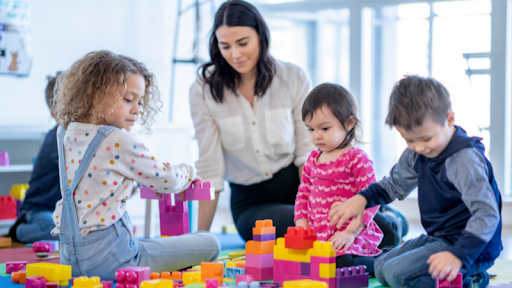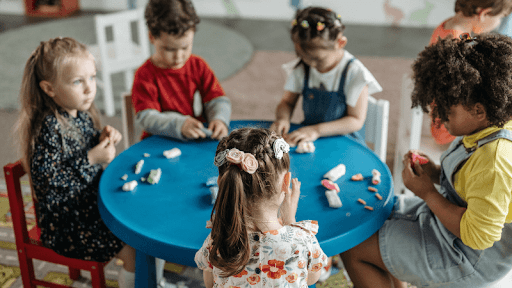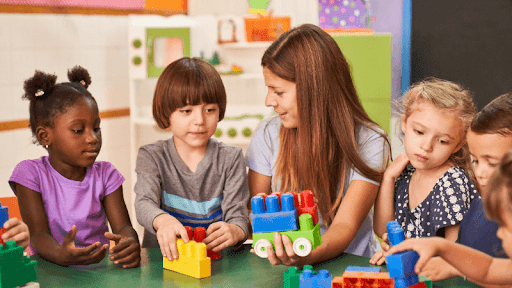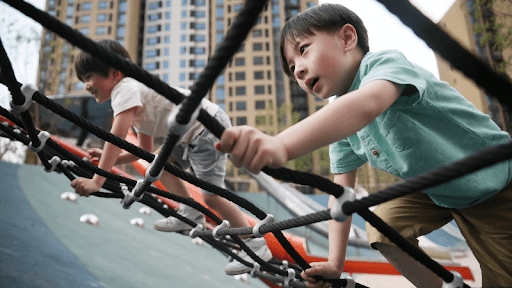The Different Pedagogical Approaches in the EYFS
Pedagogy in Early Years

Pedagogy in the Early Years refers to the techniques and strategies used in educating and supporting the development of young children.
There are various approaches to Early Years pedagogy that practitioners can use to provide opportunities for early learning, and these approaches differ in their principles, techniques, and strategies.
Some of the popular pedagogies used in Early Years education include Froebel, Montessori, Steiner/Waldorf, Reggio Emilia, forest schools, Bandura, The Curiosity Approach, and Chris Athey’s Schemas.
Friedrich Froebel
 Friedrich Froebel was a German educator who is known for his contributions to the field of education, particularly for his invention of the kindergarten system. He believed that children learn best through play and that education should focus on nurturing children’s natural curiosity and creativity.
Friedrich Froebel was a German educator who is known for his contributions to the field of education, particularly for his invention of the kindergarten system. He believed that children learn best through play and that education should focus on nurturing children’s natural curiosity and creativity.
Froebel’s approach to education was heavily influenced by his belief in the importance of the natural world and the role of education in fostering a sense of interconnectedness with the world around us. His ideas had a significant impact on the development of early childhood education and are still influential today.
Froebel was born on April 21, 1782, in Oberweissbach, Thuringia, Ernestine Saxony, which is now in Germany. He founded the first kindergarten in 1837, which he called the “children’s garden,” and developed a system of education that emphasized play, self-expression, and creativity. Froebel believed that children learn best through hands-on exploration of the natural world and that play is a crucial part of this process. He developed a series of educational toys and games, such as building blocks and puzzles, that were designed to help children learn through play.
Froebel’s approach to education was based on the idea that children are naturally curious and creative, and that education should foster these qualities. He believed that education should not be focused solely on the acquisition of knowledge, but should also promote the development of the whole child, including their physical, emotional, and spiritual well-being. Froebel’s approach to education emphasized the importance of nature and the interconnectedness of all things. He believed that children should be taught to appreciate the beauty and wonder of the natural world and to develop a sense of responsibility towards it.
Maria Montessori’s method
 Maria Montessori’s method of education, also known as the Montessori method, is based on the belief that each child is unique and has an innate desire to learn. This method emphasizes independence, freedom of choice, and hands-on learning experiences in a carefully designed environment.
Maria Montessori’s method of education, also known as the Montessori method, is based on the belief that each child is unique and has an innate desire to learn. This method emphasizes independence, freedom of choice, and hands-on learning experiences in a carefully designed environment.
Montessori believed that children have an inner drive to learn and that their environment should support this natural curiosity. Therefore, the classroom environment in Montessori schools is designed to be child-centered and child-sized. The furniture, materials, and tools are all adapted to the child’s size, making it easier for them to explore and learn independently.
One of the main features of the Montessori method is the use of specially designed materials. These materials are designed to be self-correcting, allowing children to learn from their mistakes and take ownership of their learning. Montessori materials also provide opportunities for exploration, discovery, and problem-solving, helping children develop their cognitive, physical, and social-emotional skills.
In the Montessori method, teachers act as facilitators, observing and guiding children as they learn. They create a supportive and nurturing environment that encourages children to follow their interests and develop their strengths. The Montessori method also emphasizes respect for each child’s individuality, promoting a sense of community and collaboration among the students.
Rudolf Steiner Approach
 While Rudolf Steiner’s Waldorf or Steiner approach to education focuses on providing a calm, peaceful, and predictable environment for children, it emphasizes the importance of incorporating the whole child, including their soul, in the learning process. This approach is divided into three stages, with the first stage covering children from birth to seven years old, where account is taken of the child’s whole being.
While Rudolf Steiner’s Waldorf or Steiner approach to education focuses on providing a calm, peaceful, and predictable environment for children, it emphasizes the importance of incorporating the whole child, including their soul, in the learning process. This approach is divided into three stages, with the first stage covering children from birth to seven years old, where account is taken of the child’s whole being.
The basic principles of Steiner education include experiencing the learning process through the course of regular daily tasks and activities, creating a central environment that is not over stimulating and is familiar to children, and using natural, open-ended resources that leave room for a child’s imagination. Steiner education emphasises the importance of creating a homely environment to make children feel welcome and providing each child with a place where their things belong.
If you want to utilise Steiner or Waldorf education in your own practices, there are several things to consider. Steiner believed that “doing” is learning, so you should give children as many physical activities as possible and provide opportunities for them to learn from the real world in order to understand it better.
Language can be used to help children learn different areas, such as mathematics, while they prepare food by giving them the language of adding, subtracting, weighing, and measuring. Routine and repetition are also important as they help children to find their place in the world, support good habits, and give perspective to the day. Therefore, it is important to consider whether your routine could be less chaotic and more comforting for children.
Reggio Emilia Approach
 In contrast, Loris Malaguzzi’s Reggio Emilia approach is a heavily child-centric approach that focuses on the many ways children can express themselves. This approach encourages children to be active participants in their own learning, where teachers act as facilitators or guides. The Reggio Emilia approach also strongly emphasizes the environment, as it believes that the environment serves as the “third teacher,” alongside the child and the teacher.
In contrast, Loris Malaguzzi’s Reggio Emilia approach is a heavily child-centric approach that focuses on the many ways children can express themselves. This approach encourages children to be active participants in their own learning, where teachers act as facilitators or guides. The Reggio Emilia approach also strongly emphasizes the environment, as it believes that the environment serves as the “third teacher,” alongside the child and the teacher.
Both the Waldorf and Reggio Emilia approach to education aims to provide children with a nurturing environment that fosters their individuality and encourages their curiosity. While the Waldorf approach emphasizes the spiritual dimension of a child, the Reggio Emilia approach places importance on the child’s expressive and creative abilities. Ultimately, both approaches recognize the unique nature of each child and strive to provide an environment that is conducive to their individual growth and development.
Forest schools Approach
 Forest School is a type of educational approach that emphasizes learning through outdoor experiences in natural environments. It is a child-centered and nature-based approach that supports play, exploration, and risk-taking in a safe and supportive learning environment. Forest School programs typically offer regular sessions over a long-term period, allowing children to develop strong relationships with the natural world and their peers.
Forest School is a type of educational approach that emphasizes learning through outdoor experiences in natural environments. It is a child-centered and nature-based approach that supports play, exploration, and risk-taking in a safe and supportive learning environment. Forest School programs typically offer regular sessions over a long-term period, allowing children to develop strong relationships with the natural world and their peers.
The approach aims to foster children’s holistic growth, including their physical, emotional, and social development, as well as their confidence and self-esteem. Forest School activities may include building shelters, making fires, using tools, exploring the natural world, and engaging in sensory experiences.
Through these activities, children develop a deep appreciation for the natural world and learn valuable skills such as problem-solving, teamwork, and communication. The Forest School approach has become increasingly popular in recent years, as many people recognize the benefits of learning and playing in natural environments for children’s well-being and development.
Albert Bandura’s Social Learning Theory
 Albert Bandura’s Social Learning Theory suggests that children learn through observation, imitation, and modeling of the behavior they observe in the environment, including the behavior of parents, teachers, and other adults. The theory highlights the role of cognitive and environmental factors, such as attention, motivation, attitudes, and emotions, in shaping how people learn.
Albert Bandura’s Social Learning Theory suggests that children learn through observation, imitation, and modeling of the behavior they observe in the environment, including the behavior of parents, teachers, and other adults. The theory highlights the role of cognitive and environmental factors, such as attention, motivation, attitudes, and emotions, in shaping how people learn.
Bandura demonstrated that children tend to imitate aggressive actions by those they trust, unless such actions are criticised, which led to the theory of adults as models for behaviour. The Bandura approach involves modelling calm, respectful behaviour and interactions among individuals. Bandura also stresses the importance of displaying thought processes out loud to demonstrate conscious thinking and consideration, and for adults to engage in problem-solving discussions among themselves to promote cooperation.
Adults must carefully consider their actions, knowing that their behaviour will be copied by children. For example, are practitioners eating and demonstrating good eating habits around children? Don’t hesitate to have discussions in front of children to solve problems. You are modelling good co-operative behaviour. Consider talking through your thought process out loud in front of children to model conscious thinking and consideration.
The Curiosity Approach
 On the other hand, The Curiosity Approach is a pedagogical approach that promotes children’s natural curiosity through a safe, comfortable, and open-ended learning environment. This approach emphasizes the importance of allowing children to explore, experiment, and create in their own unique ways, without the pressure of adult-directed activities or outcomes. It encourages the use of natural and open-ended resources, such as loose parts, to stimulate children’s imagination and creativity, and to foster a sense of wonder and curiosity.
On the other hand, The Curiosity Approach is a pedagogical approach that promotes children’s natural curiosity through a safe, comfortable, and open-ended learning environment. This approach emphasizes the importance of allowing children to explore, experiment, and create in their own unique ways, without the pressure of adult-directed activities or outcomes. It encourages the use of natural and open-ended resources, such as loose parts, to stimulate children’s imagination and creativity, and to foster a sense of wonder and curiosity.
While these two approaches differ in their focus and methods, they both acknowledge the importance of the environment in shaping children’s learning and development. In Social Learning Theory, the environment and models are essential for shaping behavior and attitudes, while The Curiosity Approach emphasizes the importance of providing an environment that supports children’s natural curiosity and exploration.
Chris Athey’s Schema approach
 Chris Athey’s Schema approach is centered around understanding the importance of repeated behavior patterns in children’s learning. Athey’s work on schemas has been influential in helping adults to comprehend the significance of repetition in children’s learning. Athey expanded on the work of Piaget regarding how children come to construct understanding through experience.
Chris Athey’s Schema approach is centered around understanding the importance of repeated behavior patterns in children’s learning. Athey’s work on schemas has been influential in helping adults to comprehend the significance of repetition in children’s learning. Athey expanded on the work of Piaget regarding how children come to construct understanding through experience.
She defines a schema as “a pattern of repeatable behavior into which experiences are assimilated and which accommodates new experiences.” The Schema approach emphasizes the significance of repetition, particularly in young children’s play, as they form schemas by repeating activities and making sense of their world through repetition. Educators can support children’s learning by identifying their schemas and providing opportunities to engage in related activities.
Understanding children’s schemas can assist educators in tailoring their teaching approaches to better fit the children’s needs and interests. Overall, the Schema approach helps educators in supporting children’s learning and development by recognizing and responding to their individual interests and abilities.
Conclusion
Understanding and incorporating these approaches into practice can benefit Early Years children. Practitioners should research and understand the principles and techniques of each pedagogy, so they can choose an approach that directly benefits the children in their care.



